Value Chain
We encounter textiles everywhere in our daily life, not only in clothing, but also in the form of carpets, seat covers, medical products, filters for smartphones, lightweight components in the automotive industry and insulating material in buildings, etc. All these items are made of fibres, yarns and textile fabrics.
Every finished product first has to pass through several manufacturing stages, and in many cases it may have to travel thousands of kilometres before it reaches its end customer. The production process encompasses numerous tasks and requires a variety of resources, plus the involvement of manufacturers, suppliers, technicians and logistics and commercial companies along a complex global value chain.
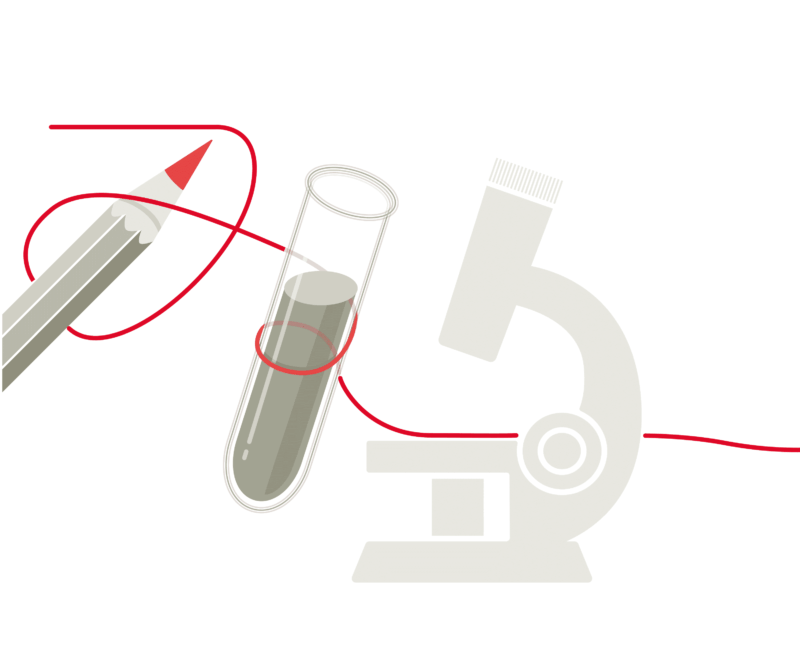
1 Research, design and development
Before a textile or item of clothing reaches the finished product stage, a great deal of work, know-how and funding has to be invested in research, planning, development and design.
The design is drafted and developed into an initial prototype in Switzerland.
1 Research, design and development
Before a textile or item of clothing reaches the finished product stage, a great deal of work, know-how and funding has to be invested in research, planning, development and design.
The design is drafted and developed into an initial prototype in Switzerland.
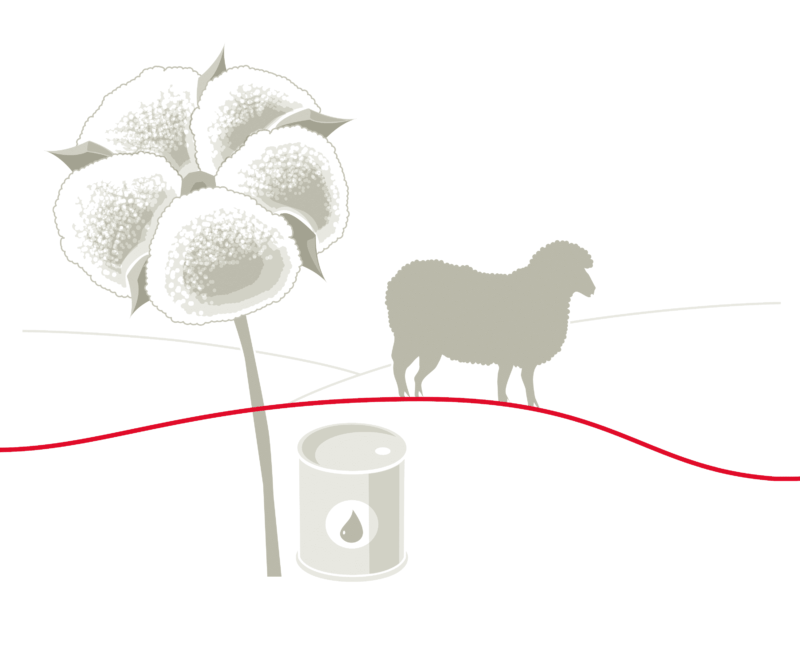
2 Raw materials
Cotton is the best known raw material in the textiles industry, but chemically produced fibres based on natural or synthetic polymers or inorganic materials such as glass or carbon are much more commonly used. They possess special characteristics, such as waterproofing and insulating properties and high elasticity, and thus decisively influence the functionality and use of the end products.
Cotton is cultivated and harvested in India.
2 Raw materials
Cotton is the best known raw material in the textiles industry, but chemically produced fibres based on natural or synthetic polymers or inorganic materials such as glass or carbon are much more commonly used. They possess special characteristics, such as waterproofing and insulating properties and high elasticity, and thus decisively influence the functionality and use of the end products.
Cotton is cultivated and harvested in India.
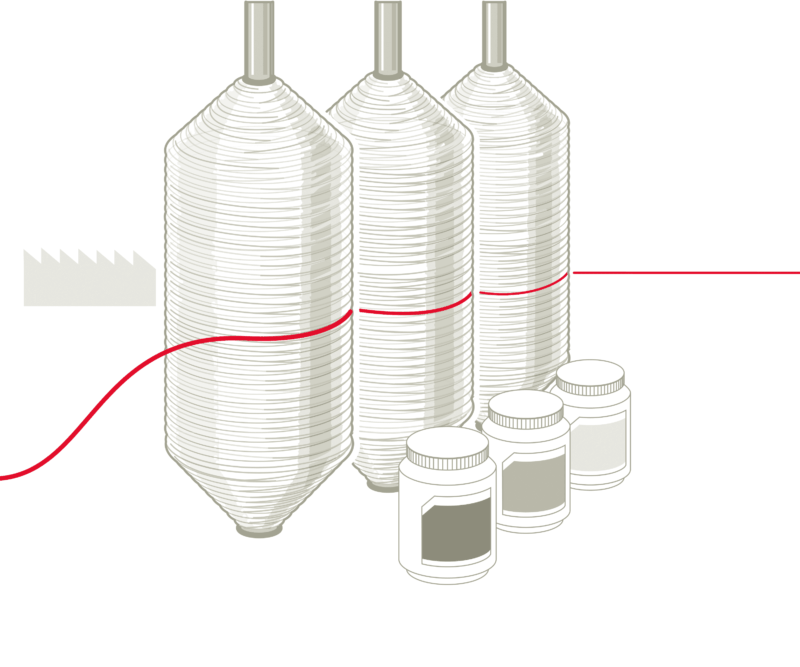
3 Yarn production
At this stage the fibres are either spun into a yarn, or continuous fibres are manufactured from polymers. The characteristics of the fibres and the way in which a yarn is produced are decisive for the quality of the subsequent product.
The cotton is transported to Turkey where it is spun into yarn.
3 Yarn production
At this stage the fibres are either spun into a yarn, or continuous fibres are manufactured from polymers. The characteristics of the fibres and the way in which a yarn is produced are decisive for the quality of the subsequent product.
The cotton is transported to Turkey where it is spun into yarn.
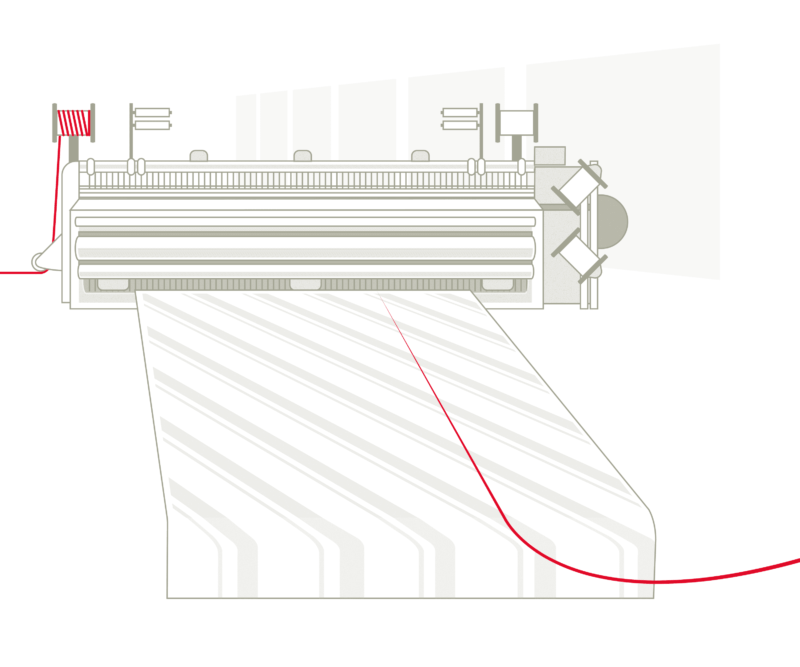
4 Production of textile fabrics, rope making
Textile fabrics are produced through weaving, knitting or braiding. They are used in a broad variety of areas, including the automotive industry, the construction industry, medical technology and architecture, as well as for producing materials for clothing. In rope making, the yarns are joined together using stranding or braiding methods.
The yarn is taken by ship to a factory in Egypt, where it is processed into a fabric.
4 Production of textile fabrics, rope making
Textile fabrics are produced through weaving, knitting or braiding. They are used in a broad variety of areas, including the automotive industry, the construction industry, medical technology and architecture, as well as for producing materials for clothing. In rope making, the yarns are joined together using stranding or braiding methods.
The yarn is taken by ship to a factory in Egypt, where it is processed into a fabric.
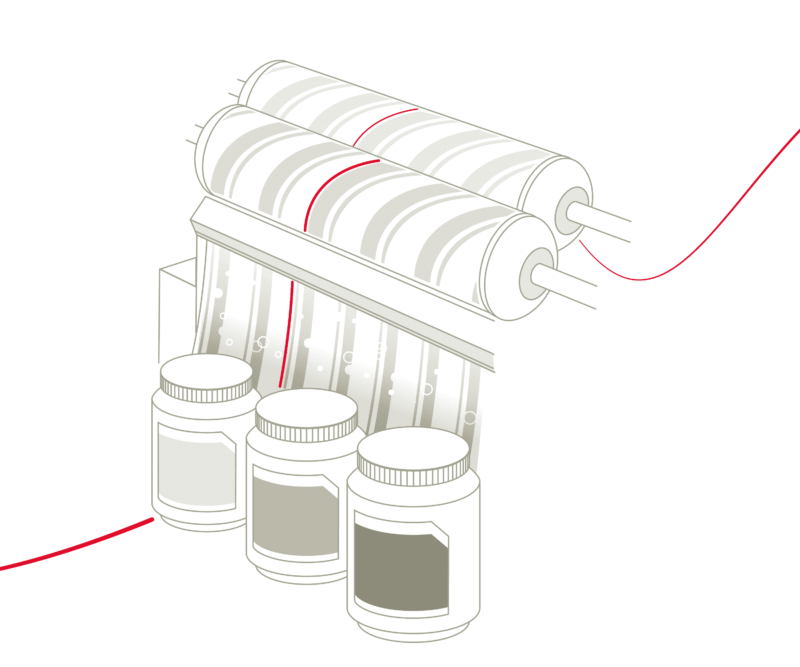
5 Finishing
The fabric is then transported back to Switzerland, where it is dyed and non-iron finished.
5 Finishing
The fabric is then transported back to Switzerland, where it is dyed and non-iron finished.
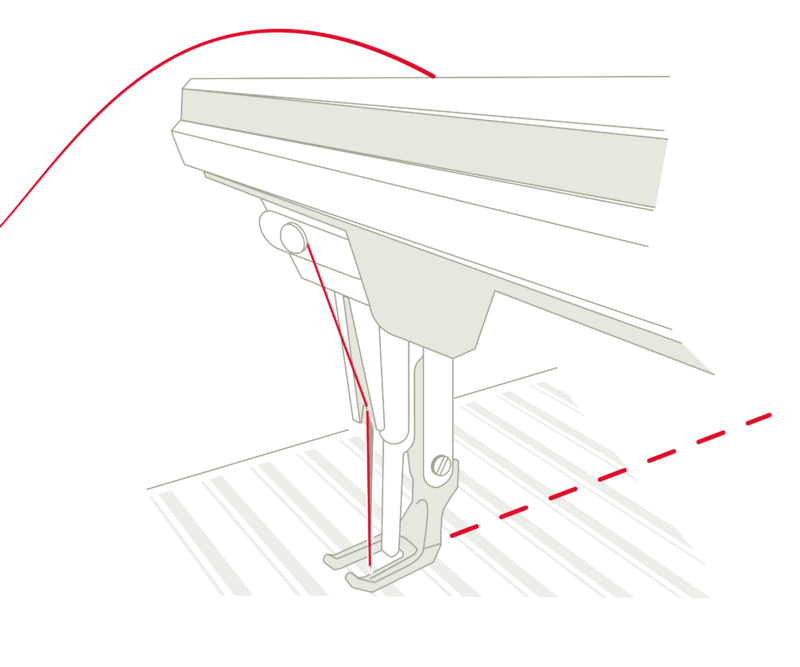
6 Manufacture of end products
Even today, automation of cutting and sewing is only possible to a limited extent. Numerous employees are needed to do the still necessary manual work. This is why many companies outsource their production to countries in Asia or Southern Europe, where skill levels are higher and labour costs are lower.
The finished material is sent to Bulgaria where it is processed into a shirt.
6 Manufacture of end products
Even today, automation of cutting and sewing is only possible to a limited extent. Numerous employees are needed to do the still necessary manual work. This is why many companies outsource their production to countries in Asia or Southern Europe, where skill levels are higher and labour costs are lower.
The finished material is sent to Bulgaria where it is processed into a shirt.
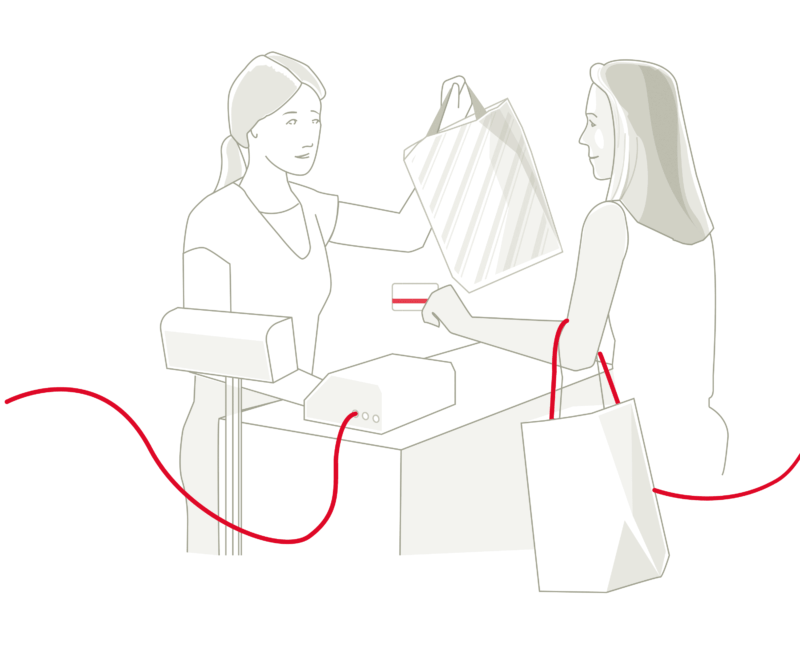
7 Trade
Textiles mostly take the form of primary or semi-finished products that are subsequently processed into end products. A variety of channels are available for bringing clothing and home textiles onto the market. Sales outlets include retailers, department stores and manufacturers’ own distribution networks. Today, global online trade (e-commerce) is the fastest growing sales market. Image, brand identity and sales promotion require a high marketing budget and are an integral part of every product launch.
The finished shirt is transported to the European distribution centre and is subsequently forwarded to the respective trade partner or subsidiary.
7 Trade
Textiles mostly take the form of primary or semi-finished products that are subsequently processed into end products. A variety of channels are available for bringing clothing and home textiles onto the market. Sales outlets include retailers, department stores and manufacturers’ own distribution networks. Today, global online trade (e-commerce) is the fastest growing sales market. Image, brand identity and sales promotion require a high marketing budget and are an integral part of every product launch.
The finished shirt is transported to the European distribution centre and is subsequently forwarded to the respective trade partner or subsidiary.
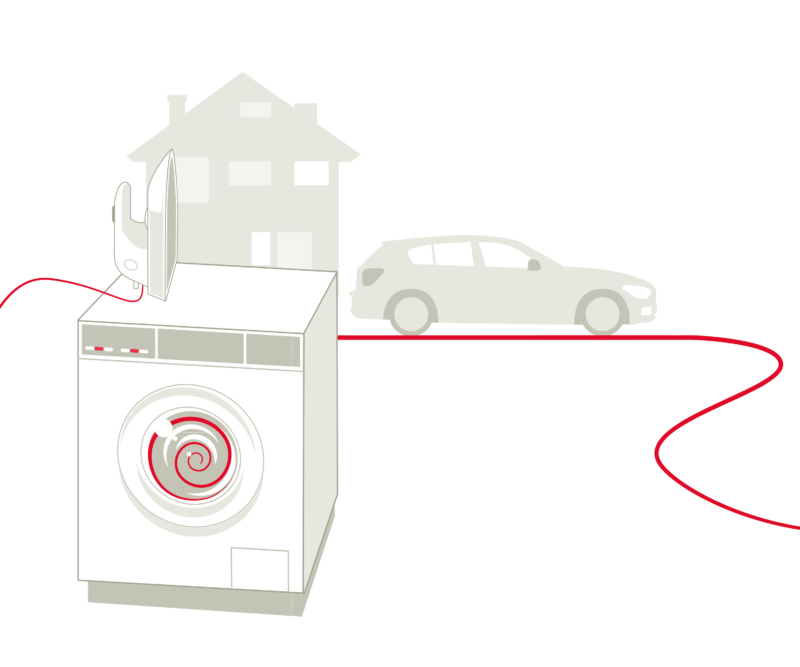
8 Purchase and use
The end consumer buys the shirt in a shop in Bern.
8 Purchase and use
The end consumer buys the shirt in a shop in Bern.
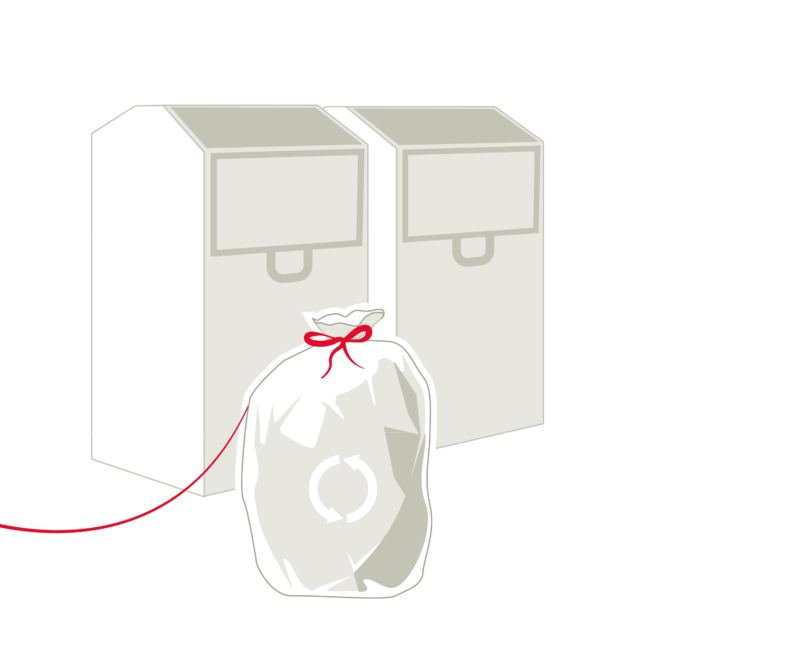
9 Disposal and recycling
In Switzerland alone, around 150 tonnes of old clothing are disposed of and recycled every day. Ideally, clothing that is still in good condition should be reused. But sooner or later, all textiles have to be disposed of. Recycling processes today are only applicable to mono-materials, i.e. they are not suitable for textiles comprising a mixture of materials. («Buy less. Choose well. Make it last» is therefore the most effective motto for sustainable consumption.)
9 Disposal and recycling
In Switzerland alone, around 150 tonnes of old clothing are disposed of and recycled every day. Ideally, clothing that is still in good condition should be reused. But sooner or later, all textiles have to be disposed of. Recycling processes today are only applicable to mono-materials, i.e. they are not suitable for textiles comprising a mixture of materials. («Buy less. Choose well. Make it last» is therefore the most effective motto for sustainable consumption.)